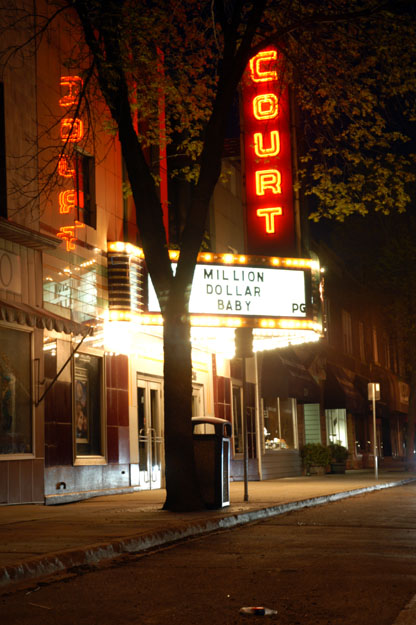
The Court Street Theatre was built in 1938 by Frederick Witter. The single screen was intended for "Showing Movies for our Neighbors", a service it still renders. The Art Deco style of the exterior has been continued throughout the theatre.
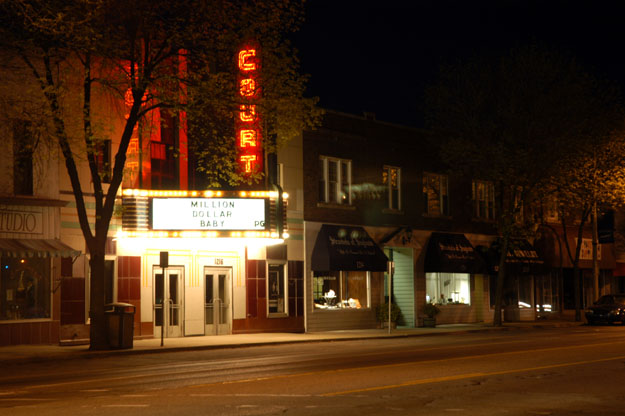
The Art Deco style of the glass paneled exterior stands out in the two-block long neighborhood business district. The large maroon and cream areas are accented with green and gold trim. Glass panels are no longer available for replacement. The marquee is original.
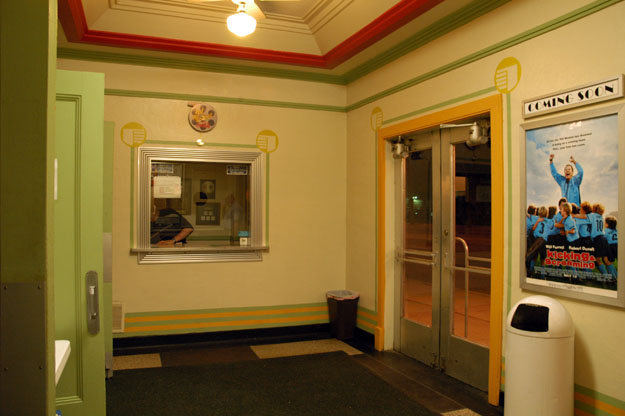
Ticket booth and East end of the lobby. Note pendulum clock made from part of Coke advertising mobile. Reel refreshment time.
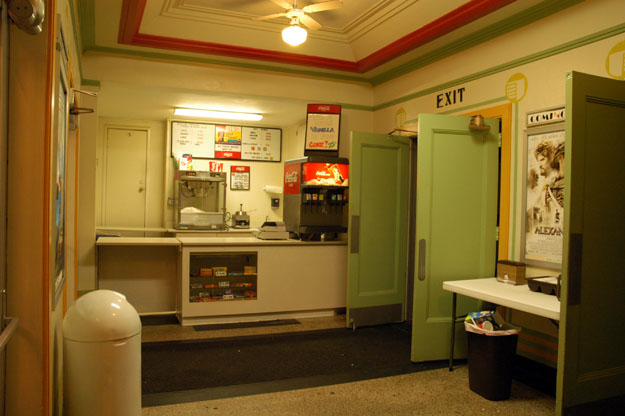
West end of lobby with concession stand. Self serve soda fountain and table for attaching lids. Pop and popcorn refills are free. Note “peanut Oil” disclaimer on the menu board. Doors lead to inner lobby.
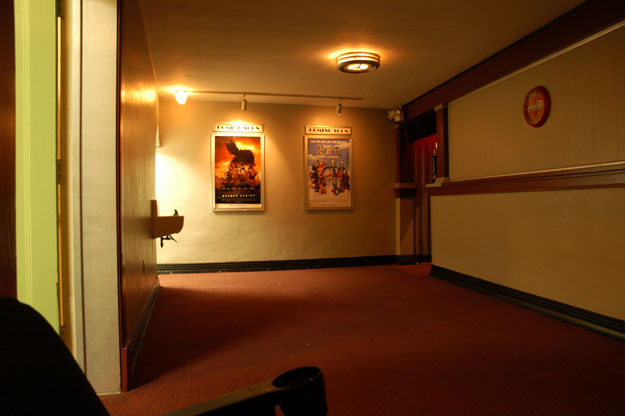
Looking west from the inner doors, the inner lobby with access left to the Women’s restroom downstairs and seating to the right. The curtain that was between this lobby and the seating has been made solid (with Coke clock) to reduce noise.
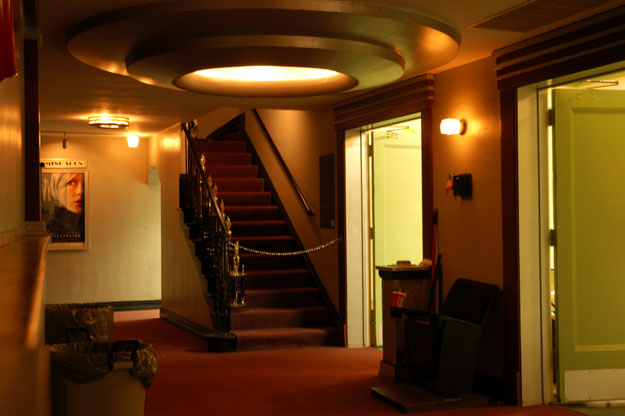
Looking east, the inner lobby with entrance to the Men’s restroom downstairs and the stairs to the balcony. Trophies are for Theatre sponsored Volleyball teams. Lobby to the right, seating to the left. Balcony Club seating is upstairs (50 new chairs).
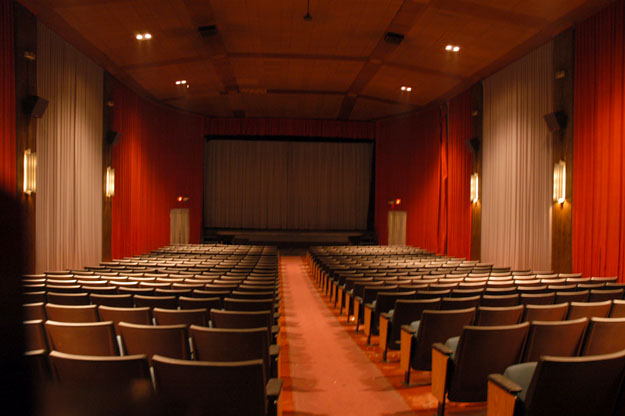
The manager's view from the top of the main aisle. Without the curtain warmers, the screen is very dark and suitable for viewing outtakes and credits even with full house light. Surround speakers are located above sconces at both sides of the seating.
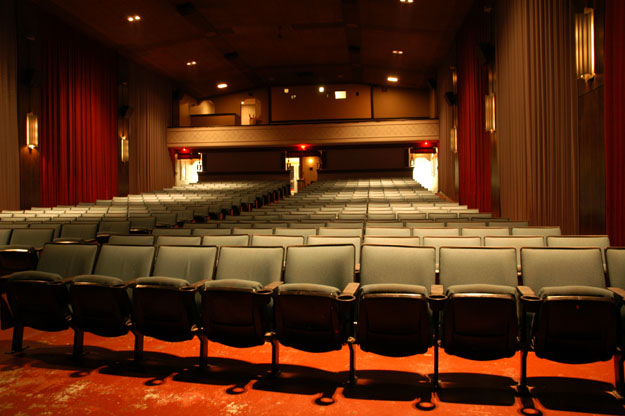
The main floor seats 400 with a center and two outside aisles. The balcony has 50 luxury chairs for Balcony Club Members. Those chairs have deluxe padding and the arms retract for more room between patrons.
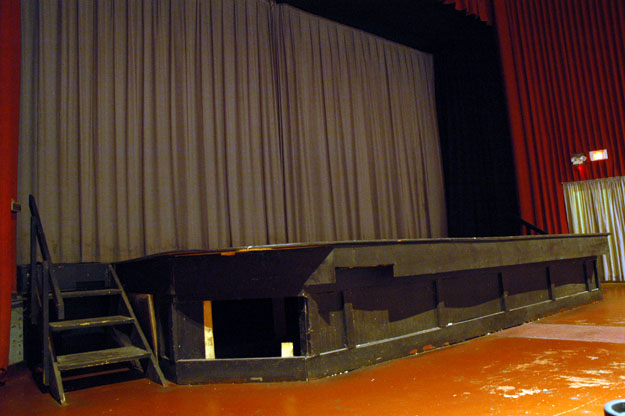
There is a small stage in front of the curtain. Some small school oriented stage shows have been presented here. The tenants must provide their own lights and sound. Adequate power is available from the boiler room behind the stage wall. Construction of the walls is cement block.
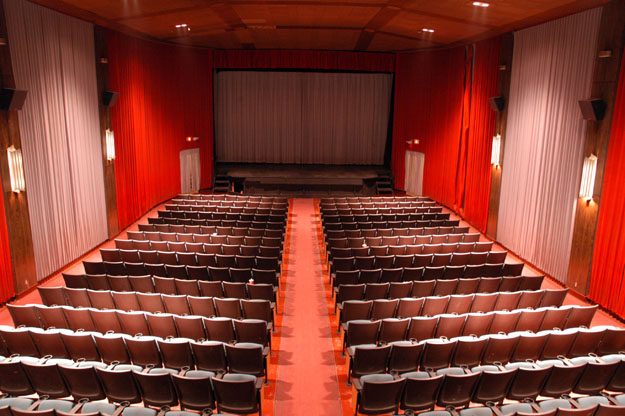
Main floor as viewed from the balcony. Full house lights without curtain warmers illustrates how little light spills onto the screen. The balcony currently is "Balcony Club Seating". Very plush seats reserved for club members only.
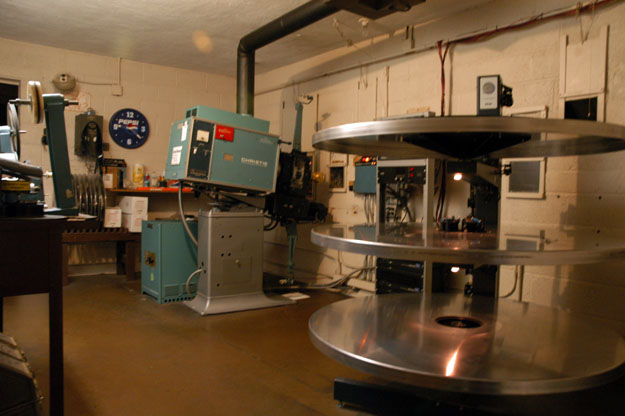
View of booth from the entrance door shows a pretty spacious area for operation
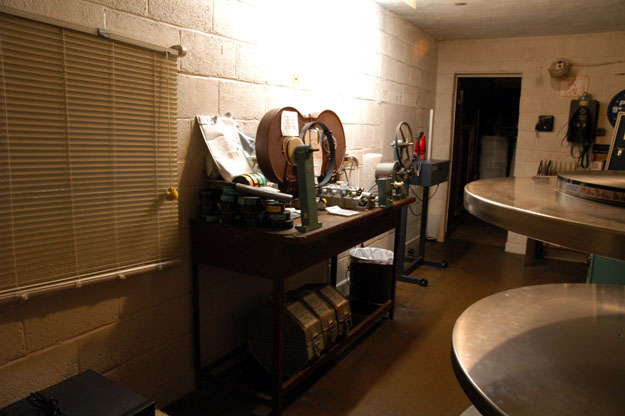
The air conditioned booth also has a window looking out over the marque to Court street below. The steel door is to the booth operator's office and restroom. Big Sky MUT and one of two fire extinguishers stand beside the rewind table.
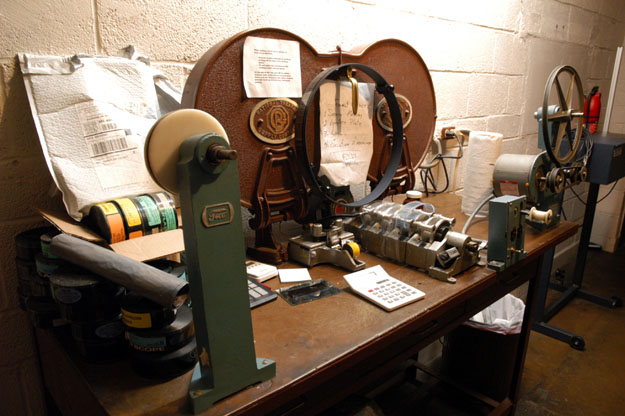
This worktable has motorized rewinds and is used to assemble prints onto 6,000-foot reels prior to loading them onto the platter. Note sync block for assuring ‘in frame’ splicing of the film elements.
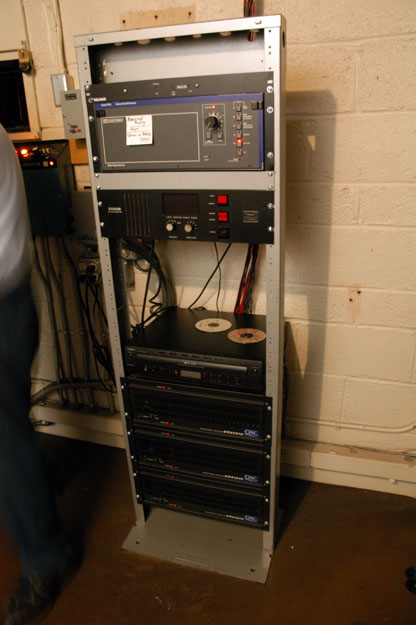
The sound rack is between the projector and the platter. Top to bottom: Kelmar reader supply, Dolby CP-55 processor, Smart monitor, CD player and 3 QSC USA 1300 amplifiers.
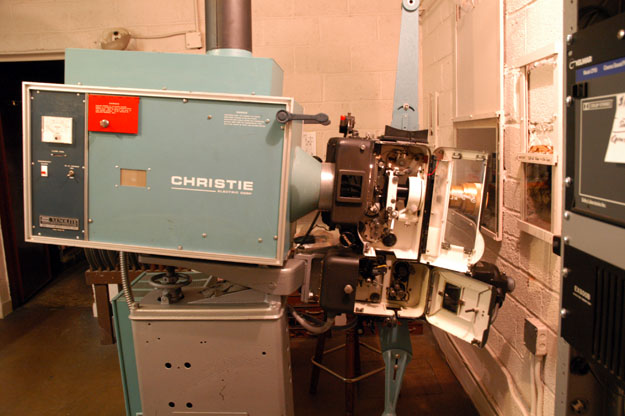
The Christie H-30 lamp house provides 3KW of light to the Simplex XL projector head which is driven by a Simplex SH 1000 sound head equipped with Kelmar visible red light reader.
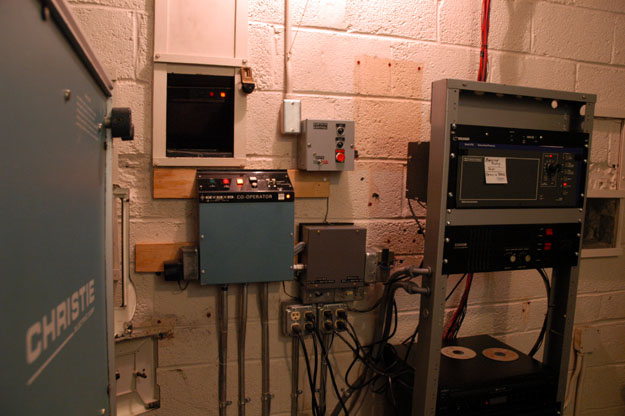
The EPRAD Co-Operator provides control for the showings. A remote start button is located in the box office. The black box is the house light interface and manual control while the grey box is the curtain interface and manual control. The ‘wall wart’ is the control for operating the red LED only while the machine is running. Paul Finn dsigned all of the interfaces for us.
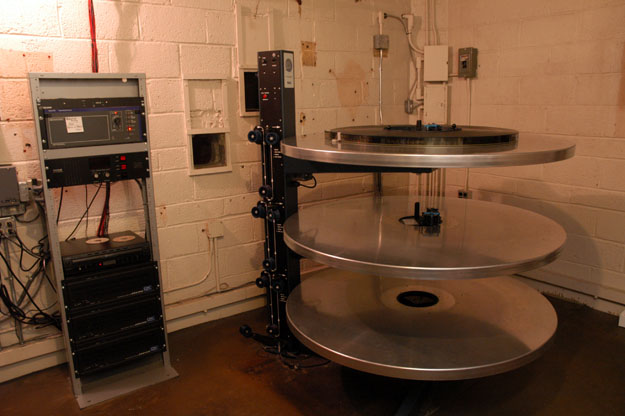
Films are played from this 3-deck Big Sky Platter machine. Often there are two features on the decks. One for matinee titles and the other for the night time shows.
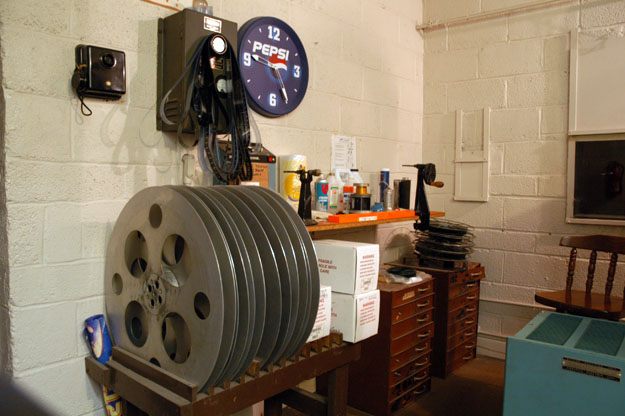
The manual rewind table is used for inspection also. There is a great view of the house and screen through the large port beside the table. Note the house phone and Trans Verter controller on the wall. Old 2,000-foot reel storage cabinets beneath table are no longer used.
| 
 Home
Home
 Products
Products
 Store
Store
 Forum
Forum
 Warehouse
Warehouse
 Client Login
Client Login
 Contact Us
Contact Us


 Home
Home
 Products
Products
 Store
Store
 Forum
Forum
 Warehouse
Warehouse
 Client Login
Client Login
 Contact Us
Contact Us
